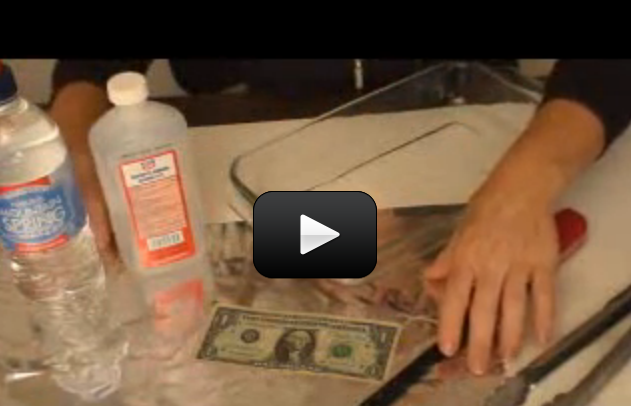What state of matter is fire? Is it a liquid? I get that question a LOT, so let me clarify. The ancient scientists (Greek, Chinese… you name it) thought fire was a fundamental element. Earth, Air Water, and Fire (sometimes Space was added, and the Chinese actually omitted Air and substituted Wood and Metal instead) were thought to be the basic building blocks of everything, and named it an element. And it’s not a bad start, especially if you don’t have a microscope or access to the internet.
Today’s definition of an element comes from peeking inside the nucleus of an atom and counting up the protons. In a flame, there are lots of different molecules from NO, NO2, NO3, CO, CO2, O2, C… to name a few. So fire can’t be an element, because it’s made up of other elements. So, what is it?
Please login or register to read the rest of this content.


this is really cool,the flames were cool too!!
The goal is to have a mixture in the baking dish that is approximately 50% alcohol and 50% water.
If the alcohol label says “50-70%”, then the water is already in the alcohol bottle….so there is no need to add water to your mixture.
But, if your bottle has 90% alcohol or higher, you need to mix that with water.
Suggestion: in the materials list, it says under water: “omit if using 50-70% alcohol” which is misleading, as the experiment shows that the water is necessary …
Yes it will!
the title isn’t what the video is, but the experiment is super cool! but will the money be fine?
I figured it out
Watch the video again and see if you can figure it out!
why did’nt it burn up
soooooooooooo
cccccooooooll
Until the alcohol is completely consumed and the fire dies out (due to lack of fuel). Usually about 5 seconds.
How did the water and alcohol keep the dollar from burning?
My dollar bill now smells of smoke. I’m glad I had a cup of water next to me! 🙂
Yes, with little to no water.
Can you use 70 percent of rubbing alcohol?
That kind will work fine.
i only 99% Rubbing Isopropyl Alcohol
i can’t believe the bill didn’t burn!
this is cool !!!!! Landon
well i try’d it and i had to blow it out ,it burn’d it, maybe the alcohol was to strong or maybe it was becus i did not let the bill drip. what do you think it was, i’m not sure